Macarius is a Latinized form of the old Greek given name Makários (Μακάριος), meaning "happy, fortunate, blessed"; compare the Latin beatus and felix. Ancient Greeks applied the epithet Makarios to the gods.
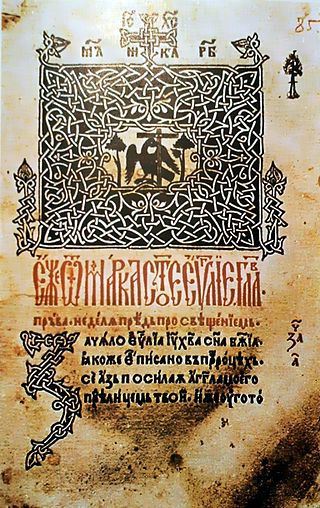
Hieromonk Makarije is the founder of Serbian and Romanian printing, having printed the first book in Serbian and the first book in the territory of Walachia.
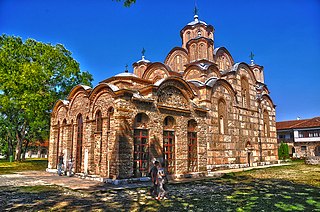
The Gračanica Monastery is a Serbian Orthodox monastery located in Kosovo. It was built by the Serbian king Stefan Milutin in 1321. The monastery was declared a Monument of Culture of Exceptional Importance in 1990, and on 13 July 2006 it was placed on UNESCO's World Heritage List under the name of Medieval Monuments in Kosovo as an extension of the Visoki Dečani site, which was overall placed on the List of World Heritage in Danger.

The Ljubostinja Monastery is a Serbian Orthodox monastery near Trstenik, Serbia. Located in the small mountain valley of the Ljubostinja river, the monastery is dedicated to the Holy Virgin.

Makarije Sokolović was the Archbishop of Peć and Serbian Patriarch from 1557 to 1571. He was the first head of the restored Serbian Patriarchate of Peć, after its lapse in 1463 that resulted from the Ottoman conquest of Serbia. He is variously reported to have been the brother, nephew, or first cousin of the Ottoman Grand Vizier Mehmed-paša Sokolović, who used his influence in the Ottoman Empire to reestablish the Serbian Patriarchate with its seat in Monastery of Peć. Patriarch Makarije is celebrated as a saint in the Serbian Orthodox Church.

The Fenek Monastery is the male monastery in the eparchy of Srem of the Serbian Orthodox Church. The monastery is situated near the village of Јаkovo, 25 km from Belgrade, former Municipality of Zemun and now Surčin. Although geographically it does not belong to Fruška gora there is a huge historical connection with Fruška gora monasteries. The monastery church was dedicated to St. Martyr Paraskeva.
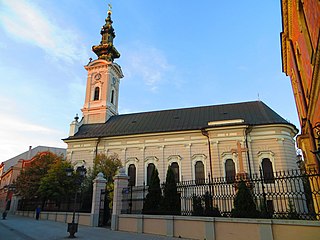
The Eparchy of Bačka is an ecclesiastical territory or eparchy of the Serbian Orthodox Church in the Bačka region, Serbia. It is situated in the autonomous province of Vojvodina and the seat of the eparchy is at Saint George's Cathedral in Novi Sad.

The Eparchy of Srem is an eparchy (diocese) of the Serbian Orthodox Church in the Syrmia (Srem) region, Serbia. Most of the eparchy is in the autonomous province of Vojvodina, and it also includes a small south-eastern part of Syrmia within the city limits of Belgrade, as well as some West Syrmian parishes in the border region of Croatia. The seat of the eparchy is at Sremski Karlovci. Since 1986, the diocesan bishop is Vasilije Vadić.

The Eparchy of Budimlja and Nikšić or Budimlja–Nikšić is an eparchy (diocese) of the Serbian Orthodox Church, covering eastern, central, and western parts of modern Montenegro. The ecclesiastical seat of the eparchy is the Monastery of Đurđevi Stupovi in Berane. Since 2021 it has been headed by Metodije, bishop of Budimlja and Nikšić.

Sokolović is a South Slavic surname. It derives from the Slavic word sokol, meaning "falcon" and literally means "son of the falcon". The Sokolović of the Sanjak of Herzegovina were called Sokoli and Sokullu-oğlu, by the Ottomans. One of the coat of arms included in the Korenić-Neorić Armorial (1595) and the Fojnica Armorial (1675–88) claimed to be that of the "Sokolovich". The coat of arms most likely was attributed to the Sokolović of Glasinac.

Piva is a historical region in Montenegro, which existed as a Montenegrin tribe also known as Pivljani. It is situated in the northwestern highlands of Montenegro, bordering Bosnia and Herzegovina. The Piva River flows through the region. The regional center is the town of Plužine.
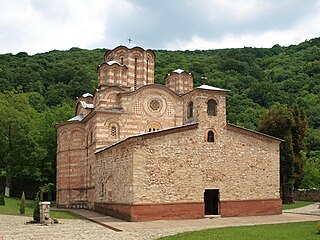
Ravanica Monastery is a Serbian Orthodox monastery on Kučaj mountains near Senje, a village in Ćuprija municipality, in central Serbia. It was built in 1375–1377 as an endowment of prince Lazar of Serbia, who is buried there. The church is called the birthplace of the new artistic movement "Morava school", due to its architectural and artistic features. It is a blend of the Mount Athos and cross-in-square five-domed model that became standard in the time of King Milutin.
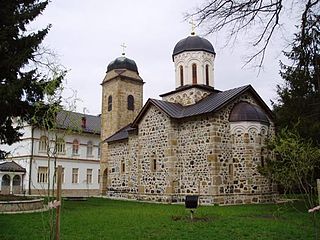
The Ozren Monastery is a Serbian Orthodox monastery dedicated to Saint Nicholas and located 6 kilometres from the town of Petrovo in northern Republika Srpska, Bosnia and Herzegovina. It is the spiritual centre of the area of Mount Ozren. It was probably founded in the second half of the 16th century, during the office of Serbian Patriarch Makarije Sokolović, who was granted permission from the sultan of the Ottoman Empire to renovate and build churches and monasteries. Folk tradition, formed in the 18th century, has it that the Ozren Monastery was founded by King Dragutin, a member of the Serbian Nemanjić dynasty, who ruled north-eastern Bosnia from 1284 to 1316.
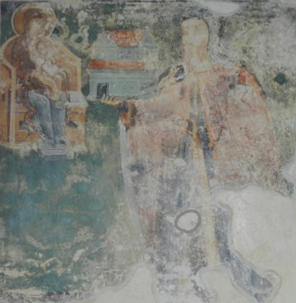
Savatije Sokolović, was Archbishop of Peć and Serbian Patriarch from 1585 to 1586. Before that, he served as Metropolitan of Herzegovina from 1573 to 1585. He was a member of the notable Sokolović family, being a nephew of Serbian Patriarch Makarije Sokolović (1557–71). Savatije founded the Piva Monastery in 1573.
Božidar Ljubavić, better known as Božidar Goraždanin, was founder of the Goražde printing house, the second Serbian language printing house and one of the earliest printing houses on the Balkans. Since 25 October 1519 he printed books on Cyrillic alphabet, first in Venice and then in the Church of Saint George in Sopotnica, Sanjak of Herzegovina, Ottoman Empire in period 1519–23. Only four printing presses were operational during the entire Ottoman period in Bosnia. The first press was press of Božidar Goraždanin while other three presses existed only in the 19th century. In 1523 his printing house became nonoperational.
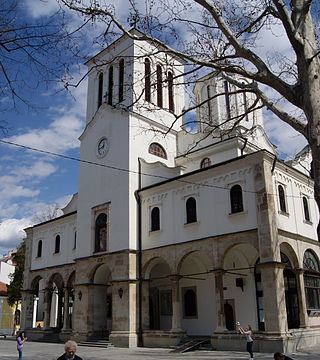
The Eparchy of Niš is an eparchy (diocese) of the Serbian Orthodox Church with its seat in Niš, in Serbia. It has jurisdiction over the south-eastern regions of Serbia. Since 2017, Serbian Orthodox Bishop of Niš is Arsenije Glavčić.

Antonije I Sokolović was the Archbishop of Peć and Serbian Patriarch from 1571 to 1574. He was the second primate of the restored Serbian Patriarchate of Peć, and the nephew of previous Serbian Patriarch Makarije I.
Gerasim I Sokolović was Archbishop of Peć and Serbian Patriarch from 1574 to 1586. He was the third primate of the restored Serbian Patriarchate of Peć, and cousin of previous Serbian Patriarch Antonije I.
Jerotej Sokolović also Jeortej, Serbian Patriarch was the archbishop of the Serbian Patriarchate of Peć and the Serbian patriarch from 1589 to 1591. He succeeded Patriarch Nikanor I on the throne of the Serbian Patriarchate. He spent a very short time as a Serbian patriarch. He was succeeded by Patriarch Filip I.














